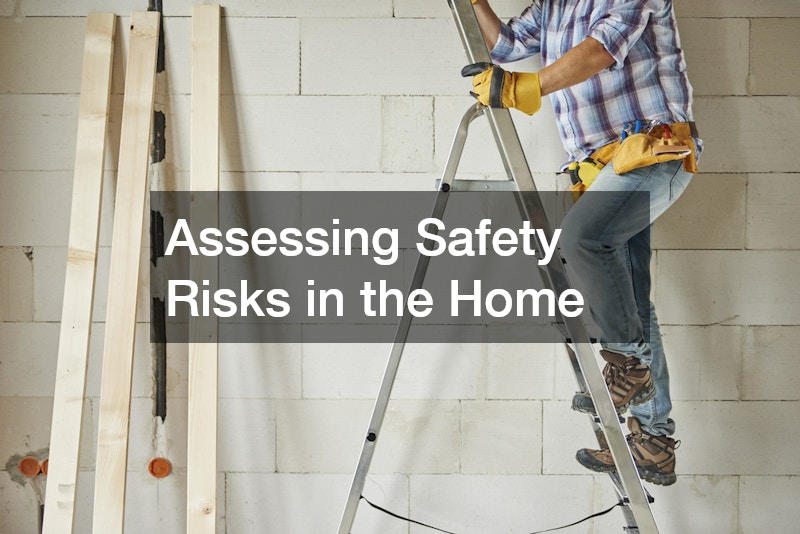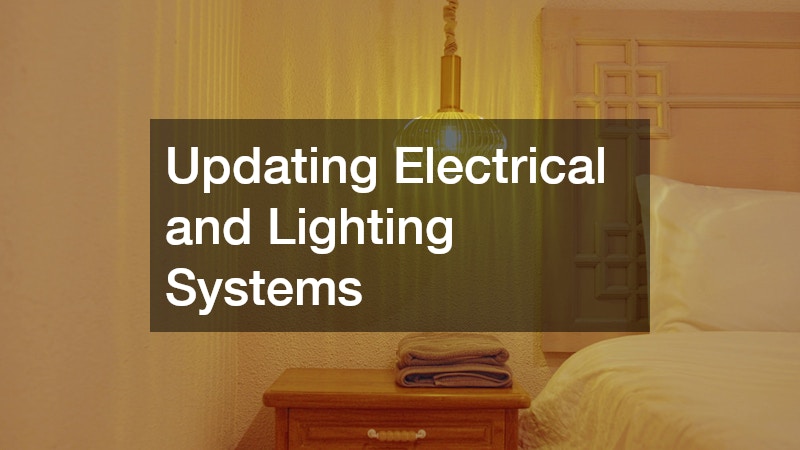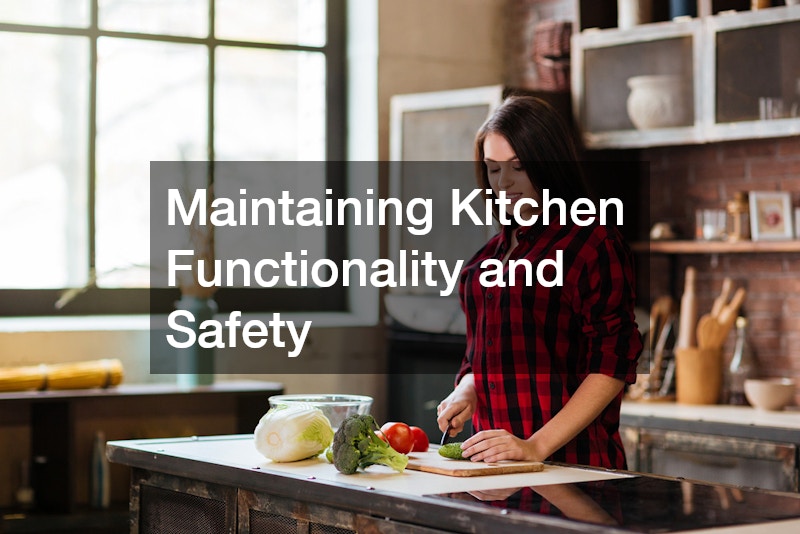
Caring for an aging home requires foresight, planning, and a clear understanding of how to address both current and future needs. As houses grow older, they present unique challenges that affect safety, comfort, and livability. A well-prepared home care checklist serves as a guide to identify areas that need attention and to prioritize improvements. Whether it is updating old systems, enhancing safety features, or planning for long-term functionality, this type of checklist helps homeowners stay organized and proactive. Instead of waiting for issues to become emergencies, the checklist ensures that preventative care and thoughtful upgrades are always at the forefront.
In practice, this means looking beyond simple cosmetic fixes and focusing on the systems that keep a home safe and functional. For example, accessibility, energy efficiency, and hidden risks all play a major role in how comfortably someone can continue living in an older home. By following a comprehensive home care checklist, families can make thoughtful decisions, manage budgets more effectively, and create an environment that promotes safety and independence. Starting with safety and accessibility lays the groundwork for a stronger, healthier home that supports well-being for years to come.
A comprehensive home care checklist also encourages regular monitoring and documentation of the home’s condition. By tracking maintenance tasks, repairs, and inspections, homeowners can spot patterns of wear and anticipate future issues before they become costly problems. This proactive approach is especially important for aging homes, where hidden or gradual deterioration can compromise safety and comfort over time. Using a checklist consistently ensures that every aspect of the home, from structural integrity to daily functionality, receives attention and care.
Assessing Safety Risks in the Home

As homes age, unseen safety hazards can develop and create serious risks if left unchecked. Issues like worn flooring, outdated wiring, and structural weaknesses are not always obvious at first glance, but they can compromise the overall safety of the household. A home care checklist is essential for pinpointing these risks before they escalate. Beyond the interior, outdoor spaces and basements can harbor hidden dangers that worsen over time, making it critical to have a system in place that evaluates all areas of the home consistently.
A specific example is pest-related damage, which can weaken wood beams, compromise insulation, or create health hazards. This is where regular inspections and interventions become necessary. Including an exterminator in the home care checklist ensures that infestations are identified and treated early, reducing the potential for long-term structural damage. By weaving pest control into overall safety planning, homeowners protect both the integrity of the house and the well-being of those who live there.
Improving Accessibility and Mobility
An important element of any home care checklist is ensuring that the home is accessible for individuals of all ages and abilities. As people age, mobility often becomes limited, which makes steps, narrow doorways, and uneven surfaces more challenging. Simple improvements such as grab bars, ramps, and better lighting make a substantial difference in reducing falls and accidents. Considering accessibility early not only benefits those who live there now but also helps future-proof the home as needs evolve.
In some cases, exterior upgrades are just as important as indoor adjustments. A fence installer, for instance, may provide solutions that enhance mobility around the property by creating secure pathways, enclosing yards for safer outdoor movement, or helping to guide landscaping choices. Incorporating this kind of improvement into the home care checklist ensures that accessibility extends beyond the doorways and hallways, supporting a lifestyle that balances independence with safety.
Updating Electrical and Lighting Systems

Older homes often contain outdated electrical systems that may not meet modern safety standards or accommodate current energy needs. A home care checklist is crucial for identifying these areas, helping homeowners prevent hazards such as overloaded circuits, flickering lights, or potential fire risks. Properly maintained electrical systems not only enhance safety but also improve convenience and efficiency, making daily tasks easier and more reliable. Regular assessment ensures that minor issues are addressed before they become major problems.
Hiring an electrical contractor as part of the home care checklist ensures that all wiring, panels, and outlets are up to code and functioning correctly. These professionals can upgrade circuits, install modern lighting, and suggest energy-efficient solutions that reduce costs while enhancing safety. Incorporating electrical system maintenance into routine home care protects the home from potential emergencies and ensures a more comfortable living environment for everyone.
Enhancing Bathroom Safety Features
Bathrooms are one of the most accident-prone areas in any home, especially in aging houses where design and materials may no longer be safe. A comprehensive home care checklist highlights the importance of installing safety features such as grab bars, non-slip mats, and shower benches. Attention to bathroom safety not only reduces the risk of slips and falls but also increases independence for residents with limited mobility.
Plumbing service plays a key role in maintaining a safe bathroom environment. Routine checks for leaks, faulty faucets, or water pressure issues can prevent slips caused by standing water and maintain proper hygiene. Including plumbing maintenance in the home care checklist ensures that safety features work as intended and that the bathroom remains both functional and secure for daily use.
Maintaining Kitchen Functionality and Safety

Kitchens in older homes can present both functional and safety challenges. Appliances may be outdated, counters worn, and layouts inefficient, creating potential hazards during meal preparation. A home care checklist can guide homeowners to address these concerns, ensuring that the kitchen is not only operational but also safe and user-friendly. Organizing storage, updating appliances, and maintaining surfaces contribute to a healthier, more efficient space.
Washer repair may seem unrelated at first, but in many homes, laundry areas are integrated into or near the kitchen, and malfunctioning appliances can pose hazards such as water leaks or electrical issues. Including washer repair in the home care checklist ensures that all appliances are functioning properly, reducing the risk of accidents and water damage. This approach helps maintain a kitchen that is both practical and safe, enhancing overall home functionality.
Strengthening Structural Integrity of the Home
The foundation and structural elements of an aging home are critical to its overall safety and longevity. Over time, wear and tear, moisture, and pest damage can weaken beams, floors, and walls, potentially leading to serious hazards. A home care checklist helps homeowners systematically evaluate these areas, identify risks, and plan necessary repairs or reinforcements. Noticing signs of foundation issues, like cracks in walls or uneven floors, allows problems to be addressed early, safeguarding both the residents and the long-term value of the home.
Crawl space repair is often a key part of maintaining structural integrity. Many homes have hidden issues beneath the floors, such as moisture accumulation, mold, or damaged support beams. Including crawl space inspections and repairs in the home care checklist ensures that foundational elements remain solid, preventing more serious problems from developing. Addressing these concerns early reduces long-term costs and supports a safe, stable living environment.
Optimizing Heating and Cooling Efficiency

Older homes frequently struggle with inefficient heating and cooling systems, leading to higher energy costs and inconsistent indoor comfort. A home care checklist helps homeowners assess HVAC systems, insulation, and ventilation to ensure optimal performance. Properly maintained systems not only improve comfort but also contribute to better air quality and lower utility bills. Routine checks help catch small issues before they escalate, supporting both efficiency and reliability.
Drain blockage can unexpectedly affect heating and cooling systems, particularly in homes with integrated plumbing and HVAC drainage lines. Including checks for potential blockages in the home care checklist ensures that condensate lines, drains, and ventilation pathways remain clear and functional. This proactive approach minimizes disruptions, reduces the risk of water damage, and helps older homes maintain energy efficiency year-round.
Creating Comfortable and Functional Living Spaces
Aging homes often have layouts that no longer suit modern lifestyles, making it important to evaluate living spaces carefully. A home care checklist can guide updates that improve flow, maximize usable space, and enhance comfort. Small adjustments, like rearranging furniture, adding storage solutions, or improving lighting, can have a major impact on day-to-day living, making the home more inviting and practical.
Tree removal may be necessary to create safe, open areas around the home or to prevent damage from overgrown roots and branches. Including tree removal in the home care checklist ensures that outdoor spaces are both safe and functional, supporting landscaping, mobility, and structural safety. Thoughtful management of the surrounding environment complements interior updates, creating a cohesive, livable home.
Incorporating Smart Home Technology
Modern technology offers numerous solutions for enhancing the safety, efficiency, and convenience of an aging home. A home care checklist can include smart home upgrades such as automated lighting, security systems, and climate control, which help homeowners monitor and manage their properties more effectively. Integrating technology thoughtfully ensures that older homes remain functional and responsive to contemporary needs without sacrificing character or comfort.
Septic inspections play an important role in maintaining both health and efficiency when incorporating technology into older homes. Smart monitoring systems can detect potential issues in septic systems early, preventing costly repairs and environmental hazards. Including septic inspections in the home care checklist ensures that technology upgrades work seamlessly with essential home infrastructure, supporting a safe, modernized living environment.
Beyond convenience, smart home technology can play a key role in emergency preparedness and energy efficiency. Features like automated alerts for unusual water usage, smoke detection, or temperature fluctuations provide homeowners with real-time information that can prevent major damage and reduce utility costs. Incorporating these technologies into the home care checklist allows families to maintain both comfort and control, ensuring that the aging home is safer, more efficient, and better equipped to handle unexpected situations.
Planning for Long-Term Home Adaptations
As homeowners age or their needs change, long-term adaptations become essential for maintaining independence and safety. A comprehensive home care checklist allows families to anticipate future challenges, plan for modifications, and make informed decisions about renovations or upgrades. Thoughtful planning ensures that the home continues to meet both current and evolving requirements without major disruptions.
Water damage cleanups are often a critical component of long-term planning. Older homes are more susceptible to leaks, flooding, or moisture-related issues, which can compromise both safety and structural integrity. Including water damage cleanups in the home care checklist helps address existing problems and prevent future incidents, allowing the home to remain a safe, comfortable space for years to come.
Long-term adaptations also include thoughtful design changes that support accessibility and everyday functionality. Features such as widened doorways, stair lifts, or adjustable counters can make a significant difference in daily life while aging in place. Including these adaptations in the home care checklist ensures that the home not only addresses immediate safety concerns but also anticipates future needs, creating a sustainable living environment that supports independence and quality of life for years to come.
Ensuring Long-Term Safety and Comfort
Maintaining an aging home requires attention to detail, proactive planning, and a systematic approach to safety, functionality, and comfort. A home care checklist provides a roadmap for addressing immediate concerns, anticipating future needs, and coordinating both minor repairs and major upgrades. By following such a checklist, homeowners can protect their investment, create a safe living environment, and enjoy a home that adapts to their evolving lifestyle.
From assessing safety risks and improving accessibility to updating systems, enhancing functionality, and planning long-term adaptations, each step in the checklist ensures that the home remains a secure, efficient, and comfortable place to live. Incorporating professional services, from plumbing and electrical contractors to exterminators and tree removal experts, ensures that specialized tasks are handled correctly and safely. Ultimately, a thorough home care checklist empowers homeowners to maintain their aging home with confidence, foresight, and peace of mind.
A detailed home care checklist provides more than just a series of tasks—it fosters a mindset of proactive management and long-term stewardship. Homeowners who follow such a checklist are better prepared to handle emergencies, prevent costly damage, and adapt spaces to meet evolving needs. By combining regular inspections, professional services, and thoughtful planning, the checklist becomes a practical tool for preserving both the safety and the value of an aging home for generations to come.
